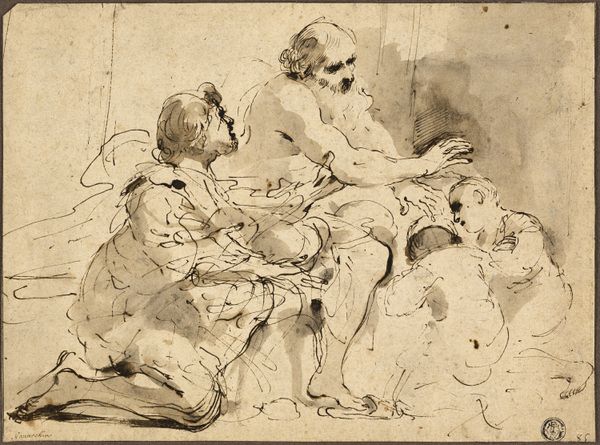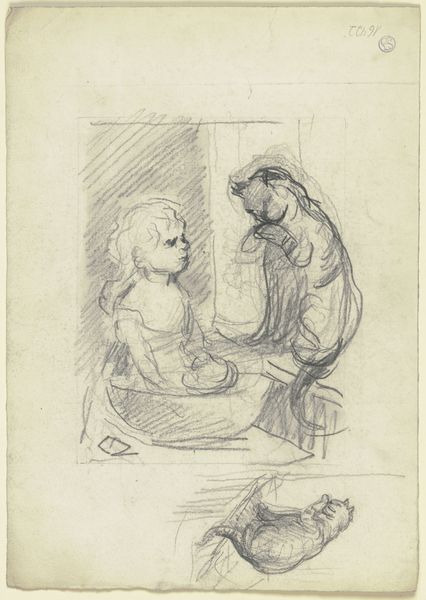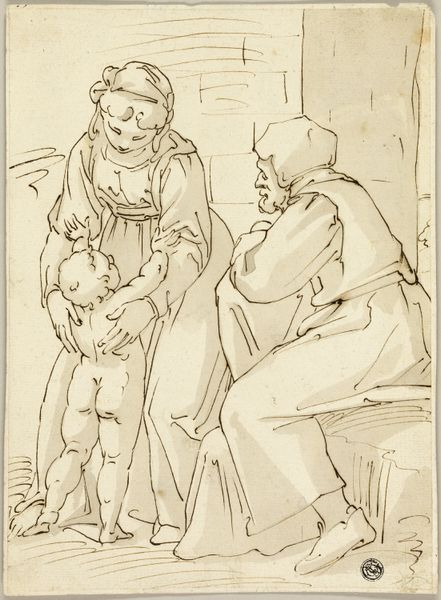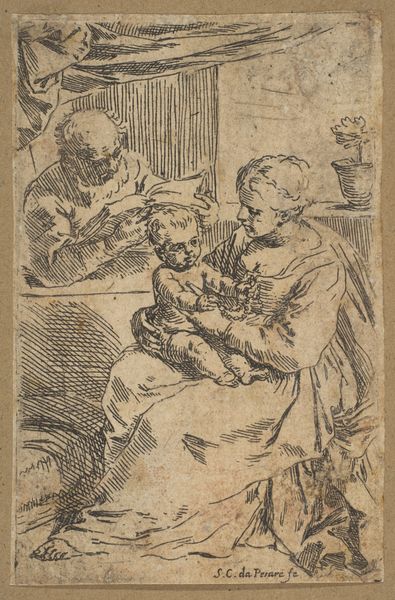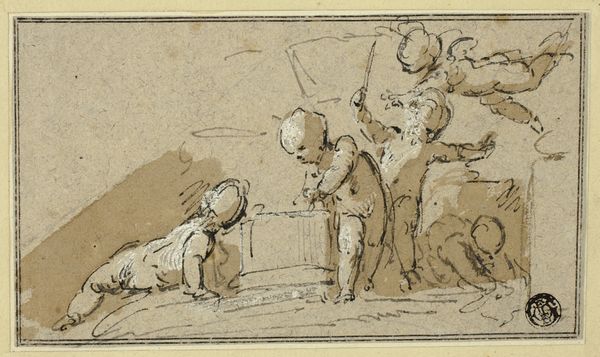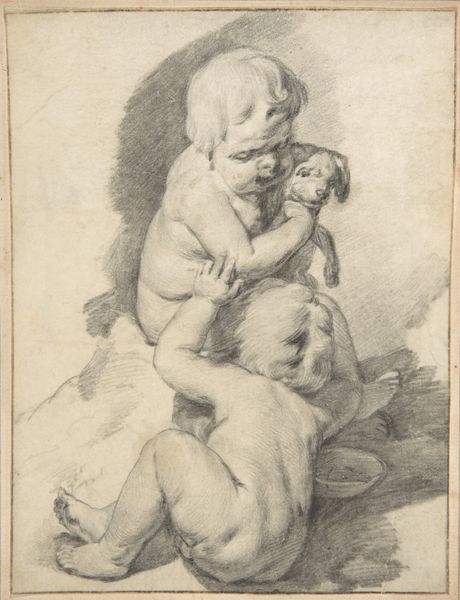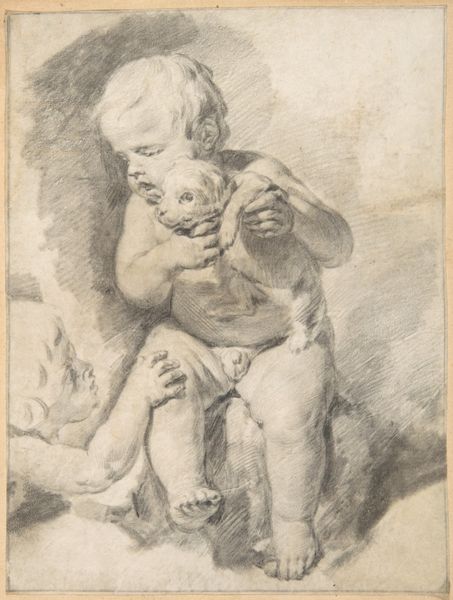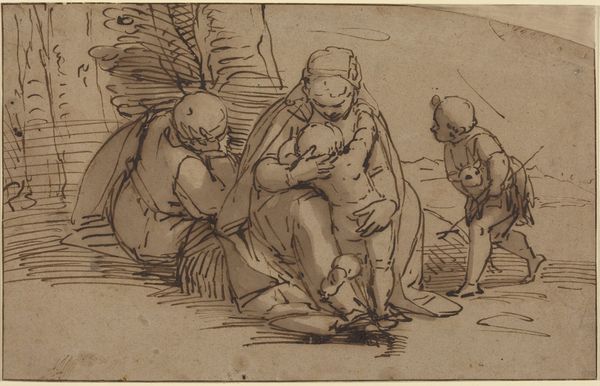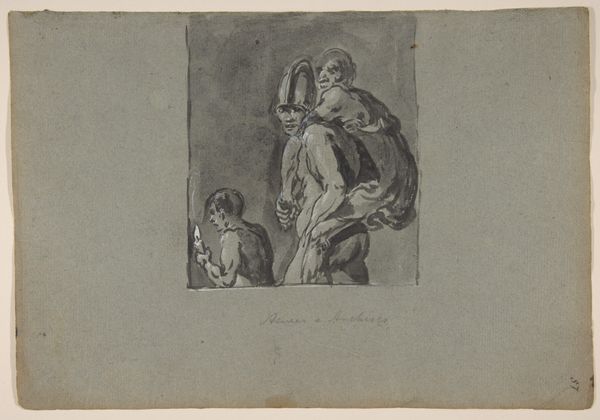
Saint Anthony of Padua with the Infant Jesus n.d.
0:00
0:00
drawing, print, paper, ink, pen
#
drawing
#
baroque
# print
#
figuration
#
paper
#
ink
#
pen
#
history-painting
Dimensions: 139 × 154 mm
Copyright: Public Domain
Curator: This intriguing pen and ink drawing is titled “Saint Anthony of Padua with the Infant Jesus,” and is attributed to Antonio del Castillo y Saavedra. Editor: The rapid strokes and hatching give it a wonderful sense of immediacy, almost like a snapshot of divine visitation, even with it’s baroque figurations. Curator: Yes, Castillo, working in 17th-century Spain, encapsulates Counter-Reformation ideals. This artwork depicts St. Anthony as a humble, learned man favored by God, emphasizing both religious piety and scholarly achievement at a time of theological disputes and emerging challenges to Catholic authority. Editor: It’s interesting how Castillo uses such modest materials. Paper, pen, ink: readily available and relatively inexpensive. Yet, through labor and skill, it depicts immense religious significance. Where would this have lived? What kind of devotion, class was it performing for? Curator: Well, likely private devotional settings—a tool to cultivate personal relationships with religious figures. It reinforces gendered associations of saintly virtue, too, right? Saint Anthony's kindness and compassion are virtues upheld and associated with the expectations of masculinity within his religious role. Editor: But how fascinating that, as a *drawing*, the materials underscore that the work itself represents someone’s artistic labor, someone producing faith. The quick sketchiness also emphasizes how ephemeral divine connections are understood to be. The means really match the theme here. Curator: I see it as a strategic use of simplicity to convey sincerity and make it accessible. Stripping away opulent details encourages the faithful to see divinity in everyday moments. By centering compassion, it attempts to offer a model for social reform, an embodied call to action, specifically toward vulnerable populations. Editor: And even within the baroque sensibilities present, it avoids excesses in both technique and form—linking materiality, production, and its possible distribution together as a testament to not only religious belief, but as a production by laborers devoted to it. It humanizes faith. Curator: Indeed. Thinking about it today reminds us about how artistic expression intersects so deeply with individual and collective identities. Editor: The artistic economy! Makes me reflect again on those accessible, available tools for faith…
Comments
No comments
Be the first to comment and join the conversation on the ultimate creative platform.


